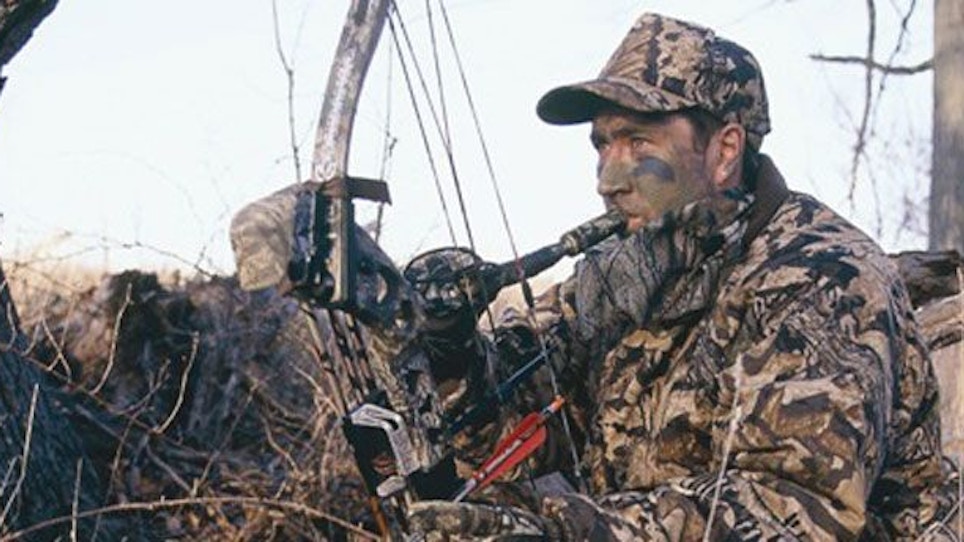Previously: Late-Season Madness
Hard & Fast Rules
 Calling on the prowl will no doubt test your woodsmanship and your deer hunting skills. As we all know, bucks have incredible senses. Indeed, one mistake at ground zero and he will promptly pick you off. Your odds for success will increase tenfold, however, if you pay attention to the following details.
Calling on the prowl will no doubt test your woodsmanship and your deer hunting skills. As we all know, bucks have incredible senses. Indeed, one mistake at ground zero and he will promptly pick you off. Your odds for success will increase tenfold, however, if you pay attention to the following details.
For starters your outerwear must be quiet. If it scratches, squeaks, or squeals, leave it home. Washed cotton will work, but wool is best.
Full camo is also a must, right down to your socks and boot soles. Ditch the headnet, however. They tend to obscure your vision, interfere with normal hearing and, worst of all, shield your skin from any subtle changes in wind direction. All it takes is a wind shift to send a buck high-tailing over the nearest ridge. If you don’t realize the change, you can’t make the necessary adjustments in your calling position. Use grease paint!
Next, you must learn how to read the woods like a fisherman reads a trout stream. Bedding areas, primary and secondary food sources as well as natural travel routes and prime calling locations should jump out at you as you move through the deer woods. Although topo maps and aerial photographs can help you in this regard, nothing beats shoe leather for getting you on intimate terms with your hunting area.
Finally, you must understand the vagaries of the rut, and then use the right calls during the appropriate stage of the rut. To imitate a buck tending a hot doe in the early season will only alert a nearby buck that something is not quite right and may in fact push him out of the area altogether. Why? It is simply too early for breeding to take place!






